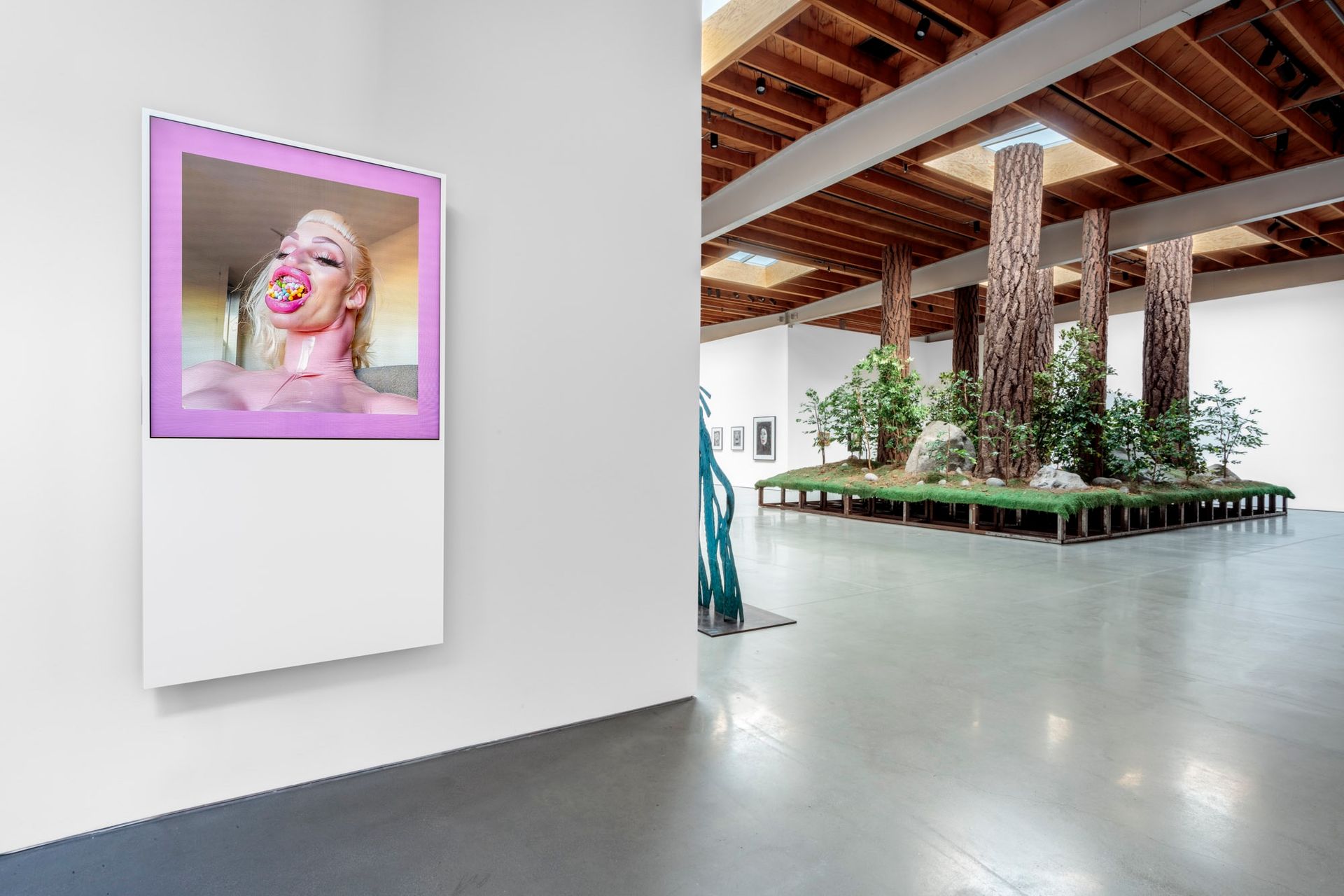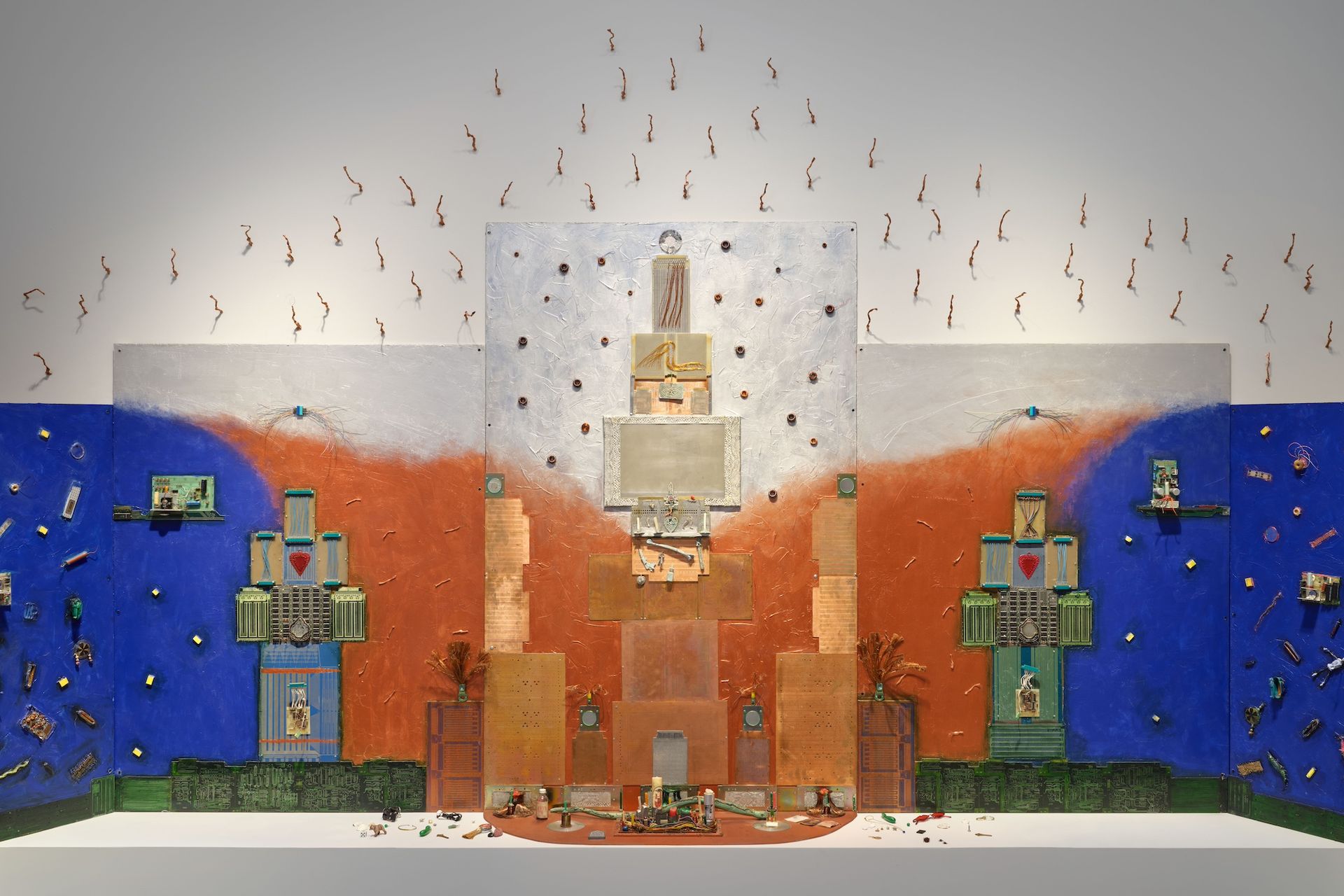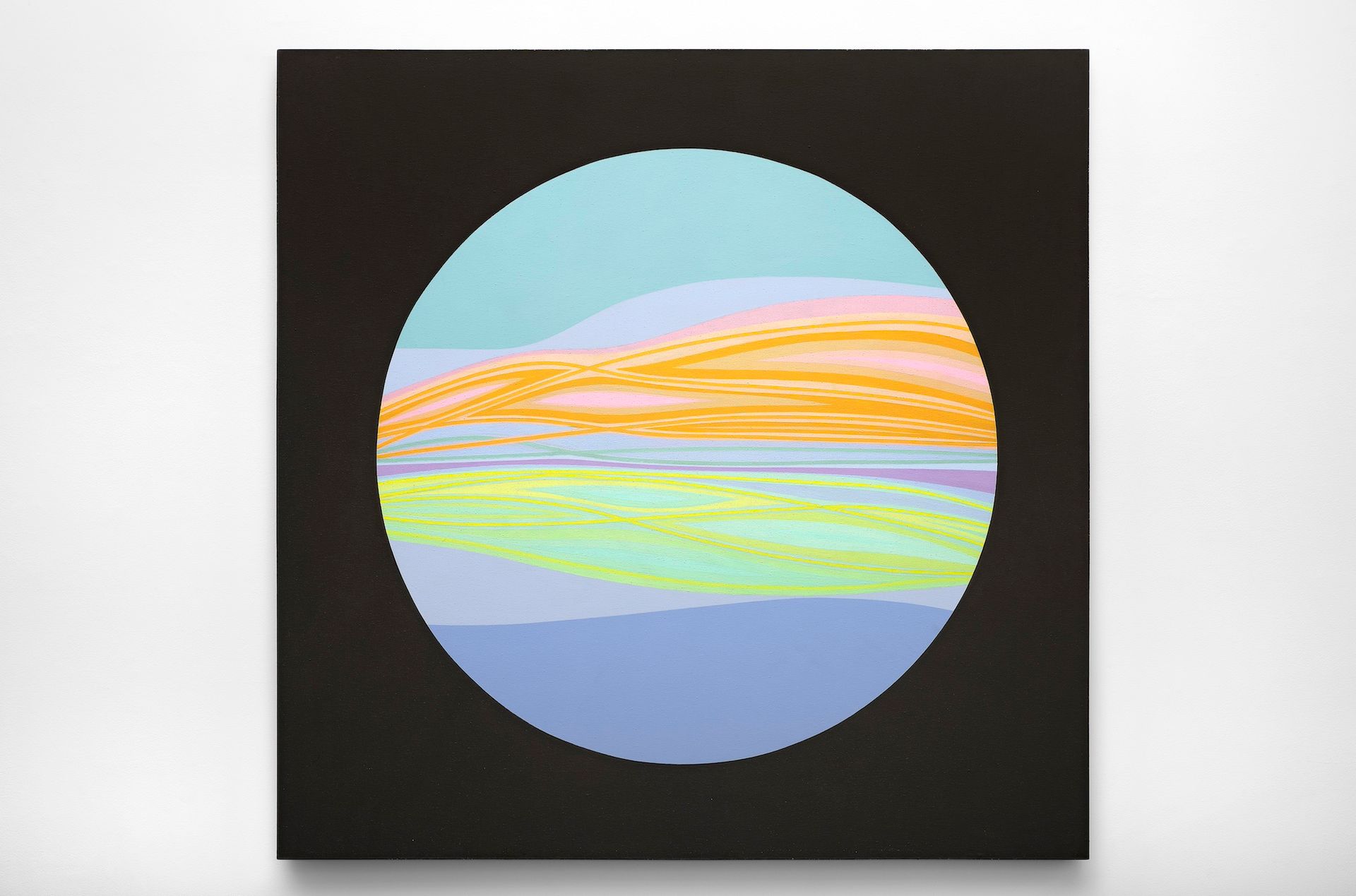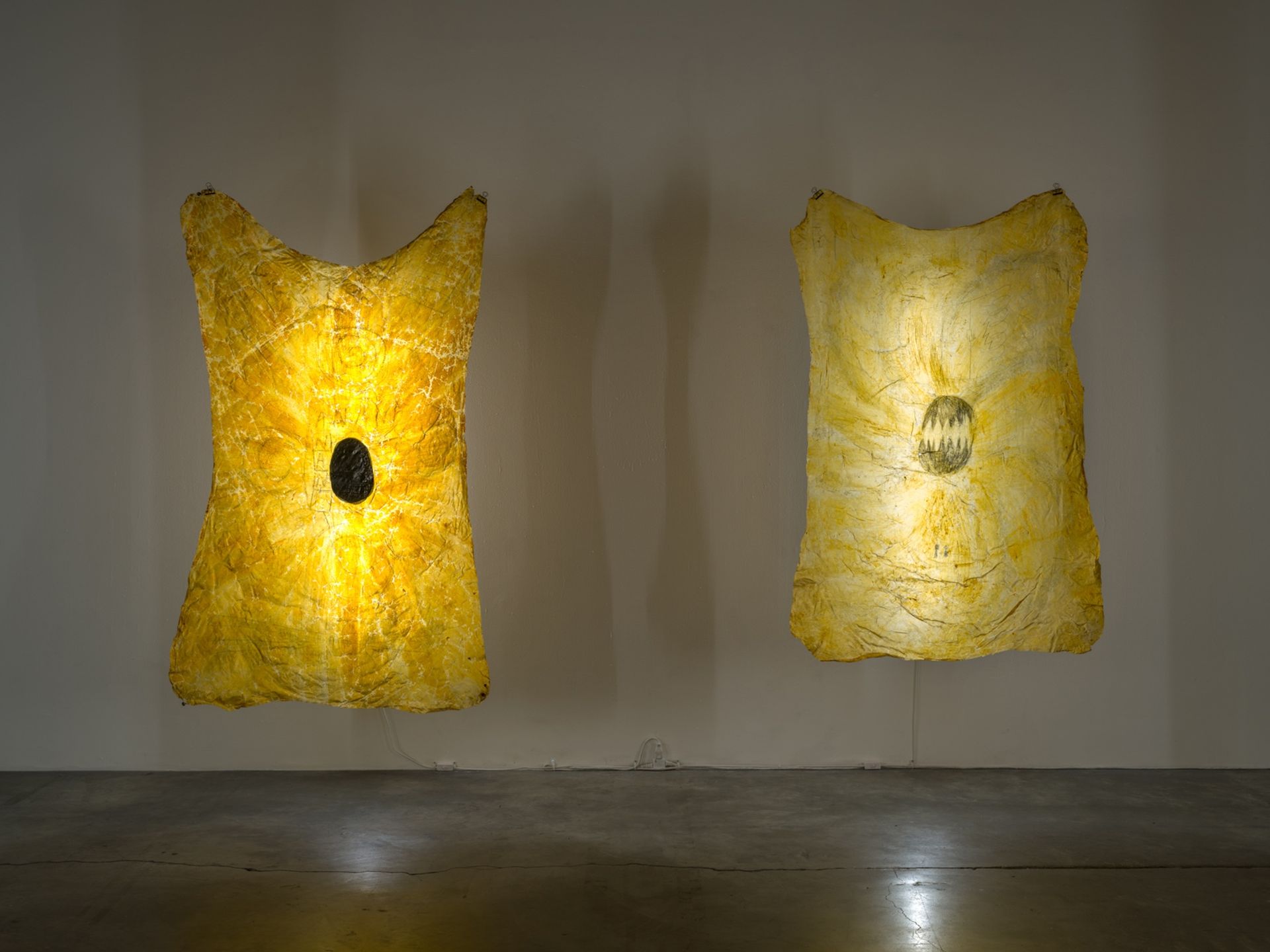Dozens of museums in and around Los Angeles form the heart of PST Art this autumn, staging shows under the umbrella theme of Art and Science Collide with $20m in Getty funding. But commercial galleries are also getting in on the action (the marketing, that is) by organising their own science-minded shows, and some prove particularly urgent. Also exciting: a few have museum-like schedules with runs of three or more months. These are five standouts.
Lauren Bon: Concrete is Fluid
Honor Fraser
Until 14 December
Water reclamation is the simplest way of describing what artist Lauren Bon has been doing for years now with the concrete-walled Los Angeles River. She has built new infrastructure to capture wastewater from the river in order to clean it and put it to use in the community irrigating park land. But her insanely ambitious and also profoundly local project, called Bending the River, is also a case study in collaboration (with her team Metabolic Studio and countless city and county agencies), a master class in recycling (not just water but soil and concrete) and a public experiment in making sculpture with a functional and formal impetus at once (hence the “bending” of her title).
Bon’s solo show at Honor Fraser is a welcome chance to see the artist’s sculptural sensibility, and her own sense of meander, at work. The main gallery contains two metal mesh towers filled with soil she salvaged this year from a landslide near her home in Topanga Canyon. And on the floor in eddies of dried-up slip is a small civilisation worth of tiny but mighty birthing figures and bird-like creatures that she handmade from clay (sourced from Bending the River) in homage to neolithic and palaeolithic goddess culture.
Another gallery features, suspended from the ceiling, two huge cylinders made of copper sheets—the only material purchased and not salvaged, she says. During construction on the river project, she lined two concrete manholes with copper sheets so they could, over a period of six weeks, be etched by the water flow. Sculptures that work like time-based prints, they have the textural complexity of an aging Richard Serra sculpture, but a completely different ethos because of their connection to city infrastructure.
Some of the works will evolve during the run of the show. Watch for plants like sunflowers and laurel sumac to sprout from the Topanga soil towers. Also look for a 26 October how-to workshop in the gallery’s tiny parking lot that involves “puncturing” the asphalt to reveal the compacted soil beneath. Like so much of Bon’s work, the project has visual punch and an environmental point, as the exposed soil will absorb rainwater and runoff, putting it to better and cleaner use than asphalt ever could.

Installation view of Post Human featuring Chris Cunningham’s Transforma (2024) at left Artwork © Chris Cunningham. Photo by Charles White / JW Pictures. Courtesy of the artist and Jeffrey Deitch, Los Angeles
Post Human
Jeffrey Deitch
Until 18 January 2025
Last month, Japanese scientists published x-ray videos showing how eels can survive being eaten by fish—worming their way up through the predator’s stomach and esophagus to escape through its gills. The imagery is revolting and wondrous both, much like the feeling of watching Transforma (2024), the new work by the elusive British filmmaker Chris Cunningham. The short video features a semi-prosthetic, digitally enhanced, drag queen-style face with spidery eyelashes and enormous magenta lips, which open extra-wide to regurgitate piles of pastel candies or streams of pink extruded ooze that resemble, depending on the scene, bubble gum, intestines or snakes.
Cunningham’s video stars in Jeffrey Deitch’s blockbuster 2024 show Post Human, a reimagining of the zeitgeist-defining museum show by the same name that he curated in 1992 on the construction, also obliteration, of the “self” in the heyday of pharmaceutical mood-manipulation, plastic surgery, genetic engineering and information networking. Well, that age is still alive and flashing its viral dance moves on TikTok, so Deitch has for PST Art updated the show with next-generation artists such as Hugh Hayden, Isabelle Albuquerque, Jordan Wolfson, Josh Kline and Anicka Yi joining some of the originals like Pippa Garner, Ashley Bickerton, Paul McCarthy, Charles Ray, Damien Hirst and Matthew Barney.
Post Human culminates with Paul McCarthy’s still-raunchy The Garden (1991-92), where, between the fake foliage, a motorised man with pants pulled down is humping a tree. Nearby Albuquerque offers a different, witchier skewering of the classical nude sculpture: a bronze of her own body, complete with claws that have a greenish, primordial-seeming patina. Meanwhile Cunningham’s video, around the corner, brings a seductive sort of digital fluidity to the grotesque humour of the McCarthy tradition.
Unfortunately the show has lightweight works by Wangechi Mutu and Jordan Wolfson in place of their reptilian-human bronzes and sick animatronics, respectively, that would have been fierce provocations. And you can imagine so many other post-Pop, meme-mainlining digital natives who belong here. But that is just a way to say that this show has its limits, while the post-human concept, which Deitch himself named and popularised, is endless.

Betye Saar, Mojotech, 1987 Courtesy of the artist and Roberts Projects, Los Angeles. Photo by Paul Salveson
Betye Saar: Mojotech
Roberts Projects
Until 28 February 2025
This exhibition is small, focusing on one large, altar-style installation, Mojotech (1987), with a couple of related assemblages. But the altar is well worth a visit and an offering: you can leave your own votives for the techno-goddess that Betye Saar realised at the Massachusetts Institute of Technology, while she was the first Black woman to be an artist-in-residence there. She has combined flea-market talismans like antique pendants and keys and with motherboards and computer wires to highlight themagic of modern technology, which of course has its own set of rituals and worshippers.
The show also has a great archival display of letters and news clippings from the time. My favourite, a chatty letter from Helen Anderson, a close friend, begins “Dear Genius, Mojotech is a brilliant idea”, and contains an update on the sender’s delayed retirement plans, which “hit a glitch (tech word) or a hex (mojo word?)”. Could somebody please call the next Saar exhibition or book “Dear Genius”?

Helen Lundeberg, Planet #3, 1965 Photo: Gene Ogami. ©The Feitelson / Lundeberg Art Foundation Courtesy of Louis Stern Fine Arts
Helen Lundeberg: Inner/Outer Space
Louis Stern Fine Arts
Until 2 November
One of the so-called California hard-edged painters, along with her husband Lorser Feitelson, Helen Lundeberg (1908-99) made coolly expressive, enigmatic and in the end highly geometric paintings, bridging the Surrealists of the 1930s and 40s and the Minimalists of the 70s and 80s. This exhibition shows one of her abiding interests throughout the decades was astronomy, reflecting the way that the discovery of new galaxies, the space race and the moon landing captured the 20th-century imagination.
Most arresting at first glance are her “planet” paintings from the 1960s, each featuring a coloured, spherical form rendered so precisely against a solid background that it hints at some mathematical ideal. But even more engaging is a more roughly rendered, extremely dark, dramatically horizontal oil painting from 1943, where a greenish globe (maybe a lamp) set on a table in a domestic scene at the left is echoed by another orb floating in the sky towards the right. Titled Inner/Outer Space, this moody painting gives the exhibition its title and offers an unsettling image of alignment between humans and the cosmos.

Examples of Eugenia P. Butler’s Invisibility Veils (1992-96). Mixed media on silk treated with rabbit glue Courtesy of the Estate of Eugenia P. Butler and The Box LA. Photo Fredrik Nilsen Studio.
Through the Vanishing Point: Eugenia P. Butler
The Box
Until 9 November
Across town are some spheres that refuse to stay inside their orbits—evoking jumpy subatomic particles as much as planets. Around 2002, the late and grossly underrecognised conceptual artist Eugenia P. Butler (1947-2008)) spray-painted geometric forms on paper so that they appear to move or cast shadows when held up at a particular angle to the light, reflecting the artist’s interests in the dialectics of visibility and invisibility, solids and liquids, matter and anti-matter.
The two series of large-format works in the show, not seen since the artist’s death, are also alive in ways that are hard to describe. Butler made mixed-media paintings known as the invisibility veils (1992-96) on silk sheets stiffened with rabbit glue, so they appear like animal hides or skins. Her daughter, the artist Corazon del Sol, describes finding them in deep storage all gummed together and having to carefully steam them to separate the works.
We should all be glad she rescued them. Lit from behind, the veils glow like portals into other universes. That is especially the case with a “veil” where Butler’s mystical notations surround a solidly vacuous black hole in the centre, reflecting her investigations into spirituality as well as quantum physics.
Meanwhile, the large works on paper in the front gallery from a couple years earlier feature symbols of her own devising set against different solid backgrounds, a bit like a deconstructed Tarot deck. One, on a green background, is a stick figure that resembles a dollar sign sprouting an unmistakably phallic head. Another, on red, is a coiled form protecting or birthing a lightning bolt. You get the impression of an artist who saw Western science as a knowledge system strongly rooted in medieval alchemy, with visual art a tool for discovering both. Or, as Butler liked to say: “Conceptual art is the capitalist version of magic.”
- The full programme of PST Art: Art & Science Collide exhibitions, including gallery shows, is available here










